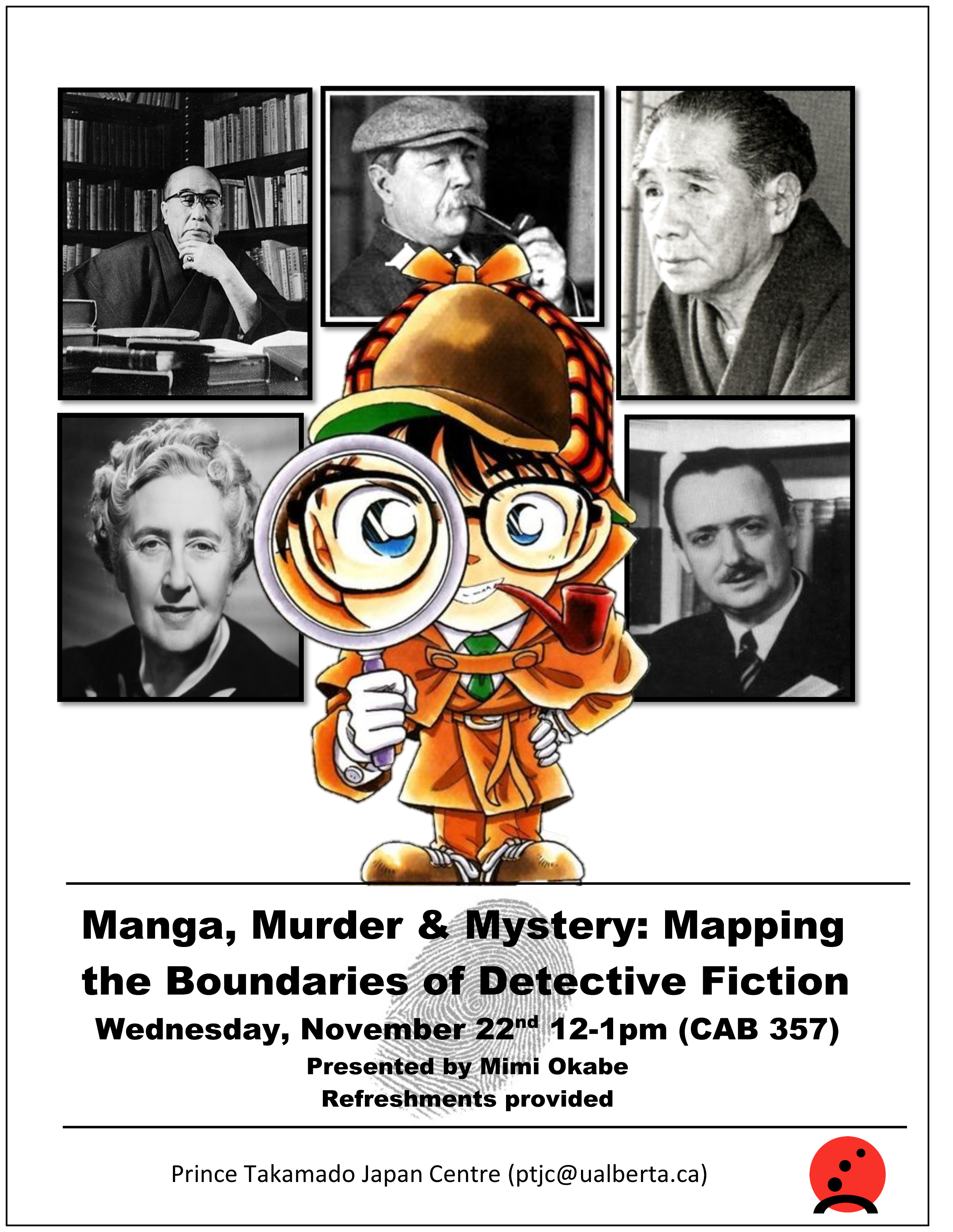
Some of us may be familiar with the stories of Edogawa Rampo, the father of Japanese detective fiction, who wrote tales of murder and mystery such as "The Case of the Murder of D. Hill," featuring his famous detective Akechi Kogorō. For others the names Okamoto Kidō and his Inspector Hanshichi, or Yokomizi Seishi's Kindaichi stories might ring a bell. Significantly however, these classic tales of murder mystery are retold and re-appropriated in the medium of manga. Scholarship on both Japanese detective fiction and manga adaptations of classic detective fiction surprisingly suffers from a lack of historicization. In this presentation, Mimi specifically traces the literary construction of the boy sleuth to investigate his role within the wider, political context of 1990s Japan-the so called Lost Decade. During this time, two major works in detective manga were published: Yōzaburō Kanari's Kindaichi Shonen no Jikenbō (1992) and Aoyama Gōsho's Meitantei Konan (1994) that brought back to life classic detectives, but in a visual-textual form. This presentation draws on both works to situate a definition of the field of detective manga in a close reading of its visual style and language.